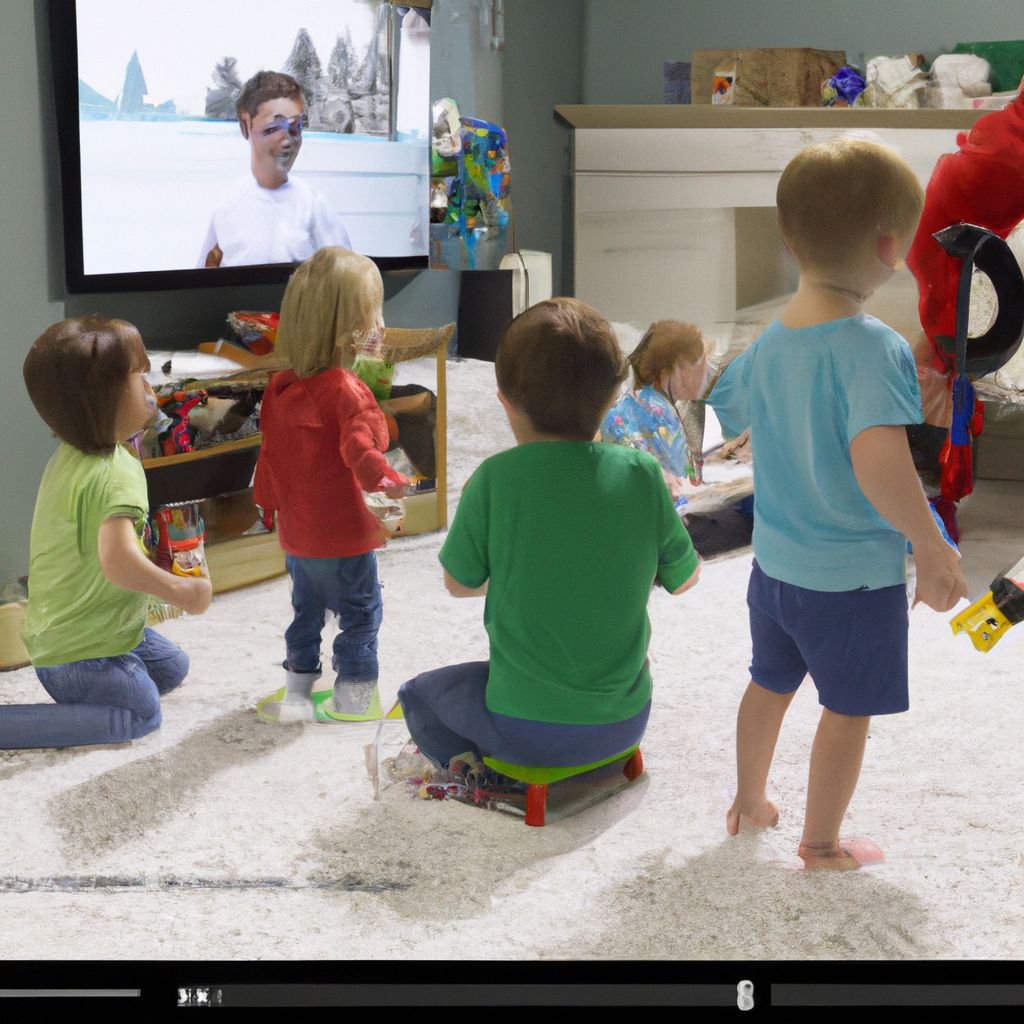In today’s digital age, technology plays a significant role in our daily lives, including early learning. However, finding the right balance between screen time and free play is crucial for the optimal development of young children. This article explores the impact of screen time on early learning, the benefits of free play, strategies for balancing screen time and free play, and provides tips for parents and caregivers. By understanding the risks, promoting creativity and imagination, creating a schedule, and being a role model, parents can ensure a healthy and balanced approach to technology in early learning.
Key Takeaways
- Setting limits on screen time is essential to mitigate the risks associated with excessive screen time.
- Choosing age-appropriate content helps to ensure that children are engaging with educational and developmentally appropriate material.
- Free play promotes creativity and imagination, allowing children to explore and express themselves.
- Engaging in interactive activities, such as puzzles and building blocks, can enhance cognitive abilities and problem-solving skills.
- Encouraging outdoor play provides opportunities for physical exercise and social interaction, which are essential for healthy development.
The Impact of Screen Time on Early Learning

Understanding the Risks
In today’s digital age, young children are exposed to screens and technology more than ever before. While technology can offer educational benefits, it is important to be aware of the potential risks associated with excessive screen time. Research has shown that prolonged screen time can have negative effects on various aspects of early learning, including language development, cognitive skills, and social interactions. It is crucial for parents and caregivers to understand these risks and take steps to mitigate them.
Setting Limits
When it comes to screen time for young children, setting limits is crucial. Balance is key, as excessive screen time can have negative effects on their development. It’s important to establish clear boundaries and guidelines for screen use. This helps children understand the importance of moderation and creates a healthy relationship with technology. Here are some strategies for setting limits:
- Consistent Schedule: Create a daily or weekly schedule that includes designated screen time. This helps children know when it’s appropriate to use screens and when they need to engage in other activities.
- Time Restrictions: Limit the amount of time children spend on screens each day. This ensures they have time for other activities, such as free play and outdoor exploration.
- Age-Appropriate Content: Choose screen content that is suitable for your child’s age and developmental stage. This helps ensure they are engaging with content that is educational and beneficial.
Remember, setting limits is not about completely eliminating screen time, but rather finding a healthy balance.
Choosing Age-Appropriate Content
When it comes to choosing content for young children, it’s important to consider their age and developmental stage. Age-appropriate content is designed specifically for children at a certain age range, taking into account their cognitive abilities and interests. It’s crucial to select content that aligns with their current level of understanding and engages them in a meaningful way. By providing stimulating and educational content, children can learn and grow while using technology.
The Benefits of Free Play in Early Learning

Promoting Creativity and Imagination
Promoting creativity and imagination is essential for a child’s development. It allows them to explore their thoughts and ideas, think outside the box, and come up with unique solutions. Creativity is not limited to artistic pursuits; it can be fostered through various activities such as storytelling, role-playing, and problem-solving games. By encouraging children to use their imagination, we are helping them develop important skills that will benefit them throughout their lives.
Developing Social Skills
Developing social skills is a crucial aspect of early learning. Interacting with others allows children to learn important skills such as communication, cooperation, and empathy. Through social interactions, children learn how to take turns, share, and resolve conflicts. It also helps them develop a sense of belonging and build positive relationships with their peers. Engaging in activities that promote social skills can have a lasting impact on a child’s development.
Enhancing Cognitive Abilities
Engaging in activities that stimulate the brain is crucial for enhancing cognitive abilities in early learning. Problem-solving games and puzzles are excellent tools for developing critical thinking skills. These activities challenge children to think creatively, analyze information, and come up with solutions. Additionally, educational apps and online resources can provide interactive learning experiences that promote cognitive development. For example, Ms. Kerri’s Story Telling Corner offers a variety of books and invites young viewers to share their favorite stories. The website also emphasizes the benefits of outdoor learning for preschoolers, including cognitive development, physical health, and social skills.
Strategies for Balancing Screen Time and Free Play

Creating a Schedule
One of the key strategies for balancing screen time and free play is to create a schedule that includes dedicated time for both activities. Scheduling can help children develop a sense of routine and structure, which can be beneficial for their overall development. It is important to allocate specific time slots for screen time and free play, ensuring that both activities are given equal importance.
A well-planned schedule can also help parents and caregivers monitor and limit screen time. By setting clear boundaries and sticking to the schedule, children can learn to manage their time effectively and develop healthy screen habits. Consistency is key when it comes to scheduling, as it helps children understand and adapt to the routine.
Here are some tips for creating a balanced schedule:
- Start by determining the total amount of screen time and free play time that is appropriate for your child’s age.
- Allocate specific time slots for each activity, making sure to include breaks in between.
- Consider the timing of screen time and free play. For example, it may be beneficial to have screen time in the afternoon when children are more likely to be tired.
- Involve your child in the scheduling process. This can help them feel empowered and more likely to follow the schedule.
Remember, the goal is to find a balance between screen time and free play that works for your child and your family. It may take some trial and error to find the right schedule, but with patience and consistency, you can create a routine that promotes healthy development and learning.
Engaging in Interactive Activities
Engaging in interactive activities is a great way to make screen time more educational and interactive for young children. Instead of simply watching videos or playing games, encourage your child to actively participate in the content they are consuming. This can include activities such as:
- Playing educational games that promote problem-solving and critical thinking skills.
- Watching educational videos and discussing the content afterwards.
- Exploring interactive apps that encourage creativity and learning.
By engaging in these types of activities, children can develop important cognitive and social skills while still enjoying the benefits of technology.
Encouraging Outdoor Play
Outdoor play is an essential part of a child’s development. It provides numerous benefits for their physical, mental, and emotional well-being. Spending time outdoors allows children to explore their environment, engage in physical activities, and develop their gross motor skills. It also exposes them to nature, which can have a calming and soothing effect on their overall mood and behavior. Playing outside gives children the opportunity to use their imagination and creativity, as they can freely interact with their surroundings and create their own games and adventures.
Tips for Parents and Caregivers

Being a Role Model
As a parent or caregiver, you play a crucial role in shaping your child’s behavior and attitudes towards technology. By being a positive role model, you can teach them healthy habits and responsible screen time use. Here are some tips to help you be a role model:
- Set boundaries: Establish clear rules and limits for your own screen time. Show your child that you prioritize face-to-face interactions and engage in activities that don’t involve screens.
- Practice mindful device use: Be aware of how often and how long you use your devices in front of your child. Limit distractions and be fully present when spending time with them.
- Encourage offline activities: Demonstrate the importance of engaging in non-screen activities by participating in them yourself. Encourage your child to explore hobbies, play outdoors, and spend time with friends and family.
Remember, your actions speak louder than words. By being a positive role model, you can help your child develop a healthy relationship with technology.
Communicating Openly
Open and honest communication is key when it comes to balancing screen time and free play in early learning. By maintaining an open line of dialogue with your child, you can better understand their needs and concerns, and address any issues that may arise. Here are some tips for effective communication:
- Listen actively: Give your child your full attention when they want to talk about their experiences with technology or their playtime. Show genuine interest and ask open-ended questions to encourage them to share more.
- Validate their feelings: Acknowledge and validate your child’s emotions and thoughts about screen time and free play. Let them know that their feelings are important and that you understand where they’re coming from.
- Be non-judgmental: Avoid criticizing or judging your child’s choices regarding screen time or free play. Instead, focus on understanding their perspective and guiding them towards making balanced decisions.
Tip: Create a safe and non-judgmental space for your child to express their thoughts and concerns about screen time and free play. This will help foster a healthy and open relationship where they feel comfortable discussing their experiences.
Monitoring and Supervising
Monitoring and supervising your child’s screen time is crucial to ensure their safety and well-being. By actively engaging in their digital activities, you can protect them from inappropriate content and potential online dangers. It’s important to establish clear rules and boundaries regarding screen time and regularly check in on their online interactions. By doing so, you can empower your child to make responsible choices and develop healthy digital habits.
Welcome to Ms. Kerri’s Story Telling Corner, where you can find helpful tips for parents and caregivers. Whether you’re a new parent or an experienced caregiver, we have valuable insights and advice to support you in your important role. From managing tantrums to promoting healthy sleep habits, our articles cover a wide range of topics to help you navigate the challenges of parenting. Visit our website today to explore our collection of articles and discover the resources you need to create a nurturing and enriching environment for your child.
Conclusion
In conclusion, finding the right balance between screen time and free play is crucial for early learning. While technology can offer valuable educational opportunities, excessive screen time can have negative effects on children’s development. It is important for parents and caregivers to set limits and provide opportunities for unstructured play and exploration. By incorporating a variety of activities, including both technology and free play, children can develop important skills and knowledge in a well-rounded way. So, let’s strive for a balanced approach to technology in early learning and create a nurturing environment for our children’s growth and development.
Frequently Asked Questions
How much screen time is appropriate for young children?
The American Academy of Pediatrics recommends that children aged 2 to 5 years should have no more than 1 hour of high-quality screen time per day.
What are the risks of excessive screen time for young children?
Excessive screen time can lead to sedentary behavior, delayed language development, poor social skills, and decreased cognitive abilities.
How can I set limits on screen time for my child?
You can set limits by establishing screen-free zones, using screen time as a reward, and setting specific time limits for different activities.
What types of content are age-appropriate for young children?
Age-appropriate content for young children includes educational apps, interactive games, and age-appropriate TV shows or movies.
Why is free play important for early learning?
Free play promotes creativity, problem-solving skills, social interaction, and physical development.
How can I encourage outdoor play in my child’s routine?
You can encourage outdoor play by providing outdoor toys and equipment, organizing outdoor activities, and spending time outdoors as a family.

Ms. Kerri’s Corner provides a exciting virtual space for preschool learning. Through a variety of engaging activities, she exposes young minds to early math, literacy, science and social-emotional skills in a developmentally appropriate way. Centers for blocks, art, books and music allow children to explore hands-on learning at their own pace. Guided lessons subtly introduce number sense, letter sounds and narrative thinking. Careful observation gives insight into each child’s progress across domains. Viewers are also invited to participate, reinforcing that their ideas are valued. By making learning fun yet purposeful, Ms. Kerri lays the groundwork for future academic success while fostering creativity and imagination. Her program offers preschoolers valuable screen-based learning experiences.






